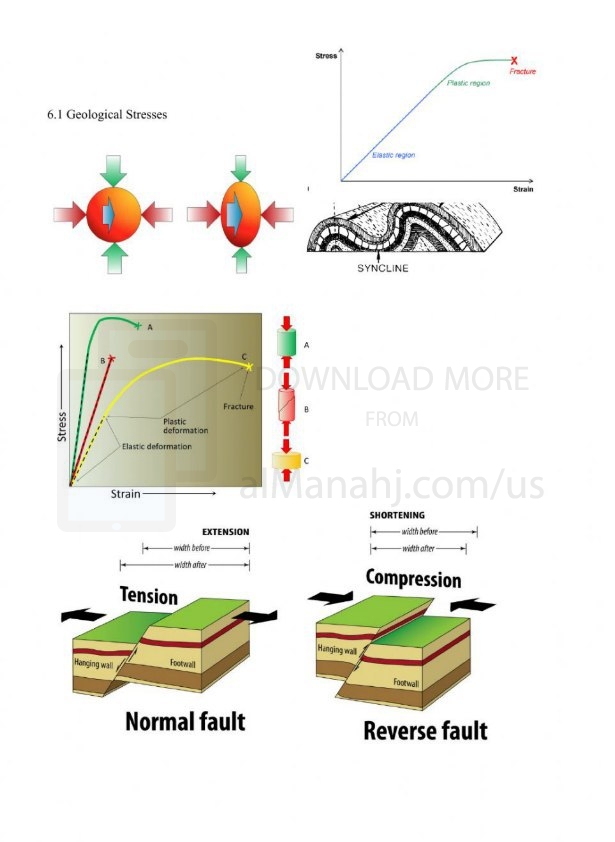| You are here: Almanahj Website ⇒ American curriculum ⇒ 7th Grade ⇒ Geology ⇒ Term 1 | ||
|---|---|---|
Worksheet about Geological Stresses | ||
|---|---|---|
| Subject: Geology | ||
| 7th Grade | ||
| Term 1 | ||
| Year: 2023/2024 | ||
| Size: 187.8KB | ||
| Number of clicks: 85 | ||
| Publish date:November 21, 2023 | ||
| Added by: Eman | ||
| Last download date: 2024-09-13 10:45:50 | ||
| Updated by: Eman9966 on 2023-11-21 17:39:13 | By: theodor Grace Vogt | |
| File info: Geological stresses are forces that act on rocks and can deform them. These stresses can be caused by a variety of factors, including: The movement of tectonic plates: When tectonic plates move, they can push against each other, pull apart from each other, or slide past each other. This movement creates stresses that can deform the rocks along the plate boundaries. The movement of magma: Magma, which is molten rock, can rise up from the Earth's interior and push against the overlying rocks. This movement can also create stresses that deform the rocks. The weight of overlying rocks: The weight of overlying rocks can also create stresses in the underlying rocks. This is because the weight of the rocks causes the underlying rocks to compress. The type of deformation that occurs in rocks depends on the type of stress that is applied to them. There are three main types of stress: Compression: Compression forces squeeze rocks together. This can cause the rocks to fold or buckle. Shear: Shear forces push rocks in opposite directions along a fault. This can cause the rocks to break along the fault. Tension: Tension forces pull rocks apart. This can cause the rocks to crack or form grabens (troughs) and horsts (ridges). The deformation of rocks can have a significant impact on the Earth's surface. It can create mountains, valleys, and other features of the landscape. It can also cause earthquakes and other natural disasters. Examples of Geological Stresses Here are some examples of geological stresses and the deformation they can cause: The Himalayas: The Himalayas are a mountain range that was formed by the collision of the Indian and Eurasian plates. The collision created compressional stresses that caused the rocks to fold and buckle, forming the high peaks of the Himalayas. The San Andreas Fault: The San Andreas Fault is a transform fault that runs through California. The fault is caused by the movement of the Pacific and North American plates. Shear stresses along the fault have caused earthquakes and other geological hazards in California. The Grand Canyon: The Grand Canyon is a gorge that was formed by the erosion of the Colorado River. The river has eroded the rocks along its path, causing tensional stresses that have caused the rocks to crack and form the canyon walls. Conclusion Geological stresses are an important part of the Earth's dynamic system. They can deform rocks, create mountains and valleys, and cause earthquakes and other natural disasters. By understanding geological stresses, we can better understand the Earth's past and predict its future. | ||
| Downloading link Worksheet about Geological Stresses |
|---|
|
1700573302.pdf
The file is being prepared for download
|
| File images |
|---|
 |